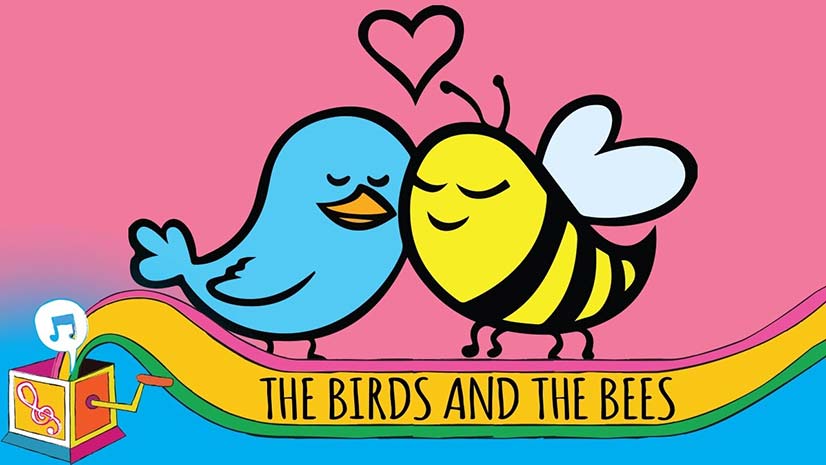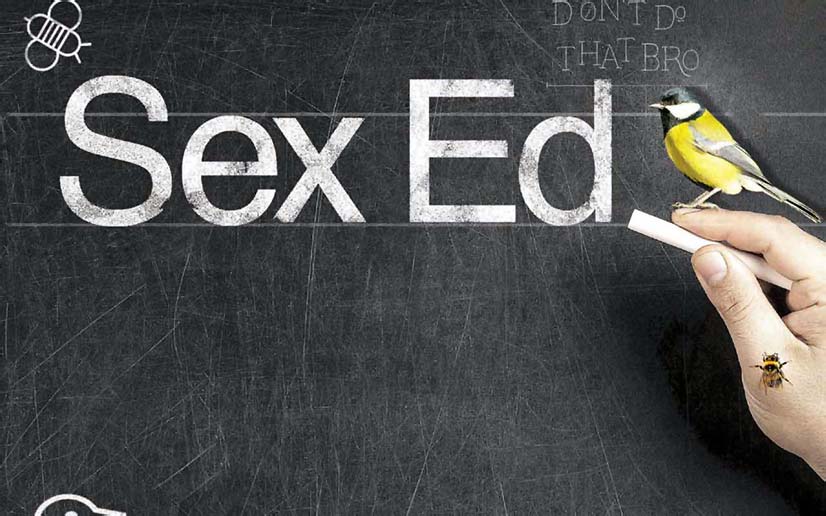Sex Positive Teaching
Explore the importance of sex positive teaching in today’s classrooms. Learn how teachers can foster healthy attitudes towards sex, gender, and consent.
Being trained as a teacher, I quickly learnt that my being in a classroom isn’t just to provide an academic education – but also in supplementing the learning that is provided at home regarding life, and the development of an individual. A great teacher is not just an educator, but we’re trained as, and develop into, a counsellor, a nurse, a sociologist, leaders, role models, and for the most part we have to be wearing all of these hats at once.
Add to this the idea that in today’s classroom there is a full spectrum of abilities and skill sets and a great teacher must be able to provide differentiated teaching to fully support each individual child as they learn at their own pace and with respects to their ability. When you factor all of this in, a teacher is not just an academic educator, but they’re someone that a child looks up to as they grow and develop their personalities.
There Are Many Aspects To Think Of
For this reason, when it comes to the important topics – a teacher must think carefully about, and reflect on, their behavior and approaches both within and outside the classroom. For the most part, a lesson isn’t just learned in the space of forty five minutes, it’s often reflected upon, applied to a concept repeatedly, and then accepted or dismissed whereby the response to that concept becomes routine.
Considering that sometimes, a child will spend more time with their teacher on an average school week than with their parents, what role does the teacher have in a child’s development and learning?
What Is Sexual Education For Children?
I want to explore this with the idea of sexual education for children. An often hotly debated topic around the world, and arguably one of the most important. People’s reluctance to discuss sex, gender, sexuality, and even pleasure often means that children grow up obtaining their information from popular media, pornography, peers and the internet.
Whilst this isn’t necessarily a bad thing when it is supplemented by proper education and discussions both within the classroom and at home, when used by themselves as a source of knowledge and learning, it can often be detrimental to an individual’s confidence, sexual ability and performance, and even their understanding of self in their macro and micro world.
Be Careful Of What Material Is Used For Sexual Development
Children, for example, developing into a sexual being will often consume pornography without necessarily understanding that it is a performance. Numerous studies, including a Dutch study published in Journal of Sexual Medicine, have demonstrated the effects that pornography has on the way teenagers of both genders approach sexual activity – simply because they don’t necessarily understand the performance aspect of it. For this reason, as well as many others we’ll touch on today, when it comes to sexual education, one of the most important terms that people need to understand is sex positive learning.
Teachers are excellently placed to handle this discussion – since there are critical components in health and physical education that discuss reproduction, the body, biology, pregnancy and the science around that. Why then, can we not also lend the discussion of sexual education into examining concepts of consent, pleasure, satisfaction, health and happiness? Aren’t these all aspects of sex, especially since we are one of the few species in the world that engage in ‘reproduction’ for the act of pleasure as well?

What is sex positive learning and will it turn my child gay?
Contrary to popular belief by opponents of same sex marriage and institutions that do not necessarily agree with different types of relationships and genders, sex positive learning will not turn a child gay. It will not make them become transgender, and it will certainly not turn them into a deviant of some kind. Sex positivity is about a positive approach to sex and gender. It’s about the acceptance and acknowledgement of all consensual sexual activity and states of beings. It acknowledges the concept of pleasure within sexual activity, as well as the need for experimentation and learning. A simple, yet complex ‘movement’, and as we go along I’ll do my best to unpack the term.
Sex Positive Learning Helps To Teach Understanding
In short, sex positive learning and teaching gives a child an understanding of the world around them. It helps them become more confident in themselves, and arguably increases their social skills because of this. Society has often been placed in a dichotomous world of male and female, gay and straight without taking into account the fluidity of gender and sexuality.
For someone that doesn’t necessarily feel that they fit into this binary, they can quickly feel isolated, depressed and ashamed as they struggle to determine why they feel/act/are different than what society and everyone else around them is telling them that they must be. That’s one of the most isolating thing about the concept of labelling, especially in queer society – the diversification of labelling is both encompassing through its variety, but limiting in its exactness.
Sex positivity is an essential component in understanding the diversification of the world and the uniqueness that makes us, us. It does this through not only understanding sex and sexual activity, but also discussing that dreaded concept of pleasure which we so frequently seem to ignore.
How can you engage in sex positive teaching?
It starts at home – and it starts at an early age. You’ve all seen the beautiful photos of cute babies holding hands, and being friends with other babies that are of a different gender or even race. Racism is learnt and is not an innate state of being. Throughout our childhood, and upbringing, we are conditioned to behave a certain way, and we pick up the traits of those around us, or are influenced by someone we hold dear.
With this in mind, sex positive teaching begins early. There’s no one ‘talk’ that can initiate sex positivity, it’s a repeated conversation, it’s the way that we react to things, and it’s the language that we use to discuss it all. Take for example a small boy that repeatedly attempts to play with his genitals. We’ve all done it, we were all kids, and it’s just how we respond to that which is important. Traditionally, we might have responded with phrases such as ‘if you keep playing with it it’ll fall off’, or ‘that’s disgusting stop playing with it’ – phrases which instil a sense of shame and embarrassment, which creates negative experiences. He’s just exploring his body.
How To Approach This?
A sex positive approach would be along the lines of – if you’re going to play with it, do it in private time. It’s not appropriate to do that in public. See the difference in the response? You’re acknowledging that it’s okay to do so, but that there is a time and place for these things. Sex positivity is about teaching correct terminology, teaching the concept of consent, and a variety of similar concepts. This is an example of sex positive teaching for a toddler, but how can that occur in the classroom?
As an English and History teacher, there were times when we would discuss characters, and the way people would live in the past. I consider this an excellent time to be mindful of my approaches and how I can supplement a child’s learning when it comes to the understanding of sex, sexuality and gender simply by making comparisons of the times, as well as including language that doesn’t reinforce the binary that they’re used to. Sex positive teaching can be as simple as not calling a unisex classroom ‘guys’, or it can be about acknowledging that pleasure is associated with sexual activity when examining the motivation of a character.

Be Open And Honest
It’s about being transparent, and not demonising sex, and doing all of this in an age appropriate manner. Some might ask – what role does a teacher have in all of this? Teachers are excellently placed to deliver this information as they go through their everyday teachings and often it’s a simple matter of adjusting language and the perceptions of certain activities. Such mindfulness can be complemented by attitudes, and education at home – answering the more personal specific questions as they develop and grow into mature beings.
By this stage you should have a basic enough idea of what sex positivity is. It’s a difficult concept to narrow down because of its broadness, as well as its interpretation to different people. From here, you need to look at sex positivity yourself. I’ve given you the toolset, I’ve provided you with the basic concepts – and from here on out it’s your own development, and self-awareness that will guide your relationship towards a sex positive attitude.
Exploration Is Ok And Healthy
There’s no right or wrong answer – so long as you keep the basic principles in mind regarding pleasure, contraception and sexual exploration. Teachers have it tough – we’re often damned if we do and damned if we don’t. So maybe, if we can take a step towards the right direction together, we can turn everyone, into great teachers.
Author: Stephen Smith – BA Of Social Sciences, M.Ed

Meet Stephen, a bold and opinionated cis-gendered gay advocate for gender equality and sexual education. Join him on the Adultsmart blog for fearless insights.








Leave a Reply